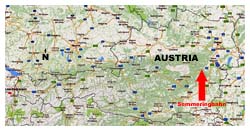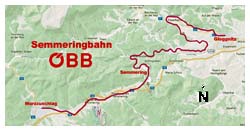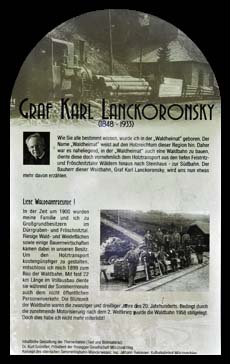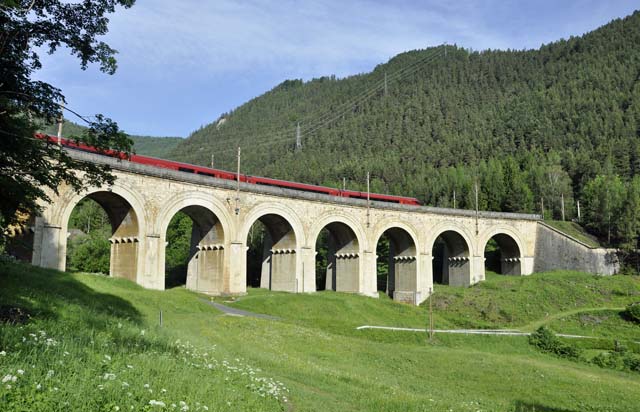
the wide slanting Unterer Adlitzgraben valley - 4 Jun 2017 William Slim.

Semmeringbahn
Semmering
Austria
N47.639892 E15.830960 (Semmering)
 The Austrian Federal Railways, Österreichische Bundesbahnen (ÖBB) operates through the Semmering Pass between Gloggnitz and Mürzzuschlag connecting Vienna and Spielfeld on the border with Slovenia. The railway is the first standard gauge railway through the Alps completed in 1854. The railway was once part of the Austrian Southern Railway, Österreichische Südbahn, or just Südbahn. In 1998 the Semmerling railway was declared a UNESCO world heritage site. The Sudbahn Museum is located in Mürzzuschlag.
The Austrian Federal Railways, Österreichische Bundesbahnen (ÖBB) operates through the Semmering Pass between Gloggnitz and Mürzzuschlag connecting Vienna and Spielfeld on the border with Slovenia. The railway is the first standard gauge railway through the Alps completed in 1854. The railway was once part of the Austrian Southern Railway, Österreichische Südbahn, or just Südbahn. In 1998 the Semmerling railway was declared a UNESCO world heritage site. The Sudbahn Museum is located in Mürzzuschlag.
The construction of the Semmering railway featured 14 tunnels, 16 viaducts (several two-story), and over 100 curved stone bridges as well as 11 smaller iron bridges. The stations and the buildings for the supervisors were often built directly from the waste material produced in the course of tunnel construction. Along its track length of 41 kilometres the Semmering railway overcomes an altitude difference of 460 metres while along 60 percent of its length the gradient is 2.0 to 2.5 percent. 16 percent of its length exhibits a curvature radius of only 190 metres. This was an entirely new technical development for railway construction so new instruments and methods of surveying had to be developed to handle the resulting challenges. Also, new technologies appeared in the Engerth locomotives because the engines in general use at this time could not handle the extreme gradients and turning radii.
The Semmering railway was constructed between 1848 and 1854 by some 20,000 workers under the project's designer and director Carl von Ghega who was born in Venice as Carlo Ghega of an Albanian family.
The start of construction work on the Semmering Railway coincided with the Revolution of 1848. In order to get the unemployed and revolting labourers out of Vienna, the building licence was granted very quickly. The entire track was subdivided into 14 lots and handed over for execution to different building contractors. This procedure allowed working simultaneously on different sections of the track and for employing great numbers of labourers a 100 kilometres away from Vienna. Soon, numerous shanty camps appeared along the future railway line. Up to 10,000 labourers, male and female, populated the area during the construction period.
Even while being built the Semmering railway was perceived as an effort of "landscape gardening" in that it attempted a harmonious combination of technology and nature. The unique travel experience which the Semmering railway offered contributed significantly to the original opening of the Semmering region for tourism. Numerous hotels and mansions are witnesses of this epoch. This enormous upswing at the turn of the century and the revaluation of the region as a winter sports area in the first third of the 20th Century were interrupted first by World War I and then by the changed recreational needs of the population. Therefore, this unique cultural landscape could be preserved with little change. A trip on the Semmering railway, which is in full use 160 years after its building, still impresses the traveller as a special experience by its varied landscape, the typical style of its mansions, and the characteristic sequence of viaducts and tunnel construction.
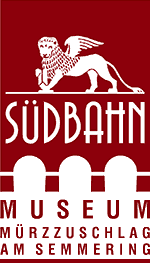 Two locomotive halls house a varied exhibition of the Vienna-Trieste Southern Railway (Südbahn). The largest collection of rail trolleys and motor cars in Austria are displayed in the roundhouse. Particular highlights are the imperial and royal cafe carriage and the 180.01 steam locomotive. In 2007 the engine shed was converted into additional exhibition space. The museum also houses the ECE Kids' Adventure Route for children aged 5 to 10.
Two locomotive halls house a varied exhibition of the Vienna-Trieste Southern Railway (Südbahn). The largest collection of rail trolleys and motor cars in Austria are displayed in the roundhouse. Particular highlights are the imperial and royal cafe carriage and the 180.01 steam locomotive. In 2007 the engine shed was converted into additional exhibition space. The museum also houses the ECE Kids' Adventure Route for children aged 5 to 10.
The 150 year anniversary of the Ghega-Semmering railway, which is probably the best known part of the old Südbahn route from Vienna to Trieste, was the occasion for the creation of the Südbahn Museum historic-cultural railway adventure world beside Mürzzuschlag station. With the construction of the rail line to Graz in 1844, Mürzzuschlag became one of the oldest railway sites in Austria. Shaped by a rich railway history, Mürzzuschlag is situated on a central stretch of the Südbahn. Since 1998 the Semmeringbahn has been ranked among the most important cultural treasures in the world as a UNESCO World Heritage Site.
The 41 kilometre mountain route across the Semmering was opened in 1854 and has played a central role in European railway connections. In 1998 it became an UNESCO World Cultural Heritage site. With its combination of narrow radii and steep gradients which can only be overcome using two locomotives it increasingly presents itself as a technical bottleneck for 21st century rail operations, particularly for freight transport. The only solution to alleviate this situation and improve environmental conditions is the construction of a state-of-the-art base tunnel.

design was introduced gradually in Vienna, Lower Austria, Upper Austria, and Styria begining in 2015.
The signal for planning was given by the Council of Ministers in spring 2005. Therefore, an area of approximately 300 square kilometres between Gloggnitz and Mürzzuschlag was surveyed. According to requirements the Semmering base tunnel was designed with a shallow grade to facilitate heavy freight trains. As a consequence it will be possible to operate the entire Southern line with only one locomotive. Apart from an economic and contemporary freight transport enhancement, the overall travel time between Vienna and Graz will be shortened by 30 minutes. In addition, cruising speeds up to 250 km/h and attractive transfer options will ensure noticeable improvements in travel comfort. The new Semmering base tunnel was designed as a two-tube tunnel system. With cross headings between the tunnel tubes at intervals of 500 metres and an emergency stop in the tunnel, it meets all safety-relevant requirements and specifications.
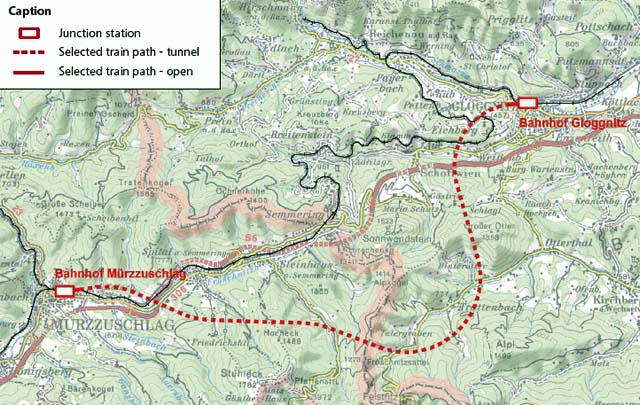
The chosen tunnel path has the lowest impact on man and nature and is routed through optimal geological areas. Moreover, it offers considerable benefits to the settlement and economic area. In addition, the former investments in the pilot gallery and the urgent investments in the Mürzzuschlag train station can be used optimally as a result of the shorter construction time and the lower construction costs. Compared with the mountain route there will be energy savings of 25 percent in the train operation as well as a 35 percent reduction of carbon dioxide emissions from freight traffic.
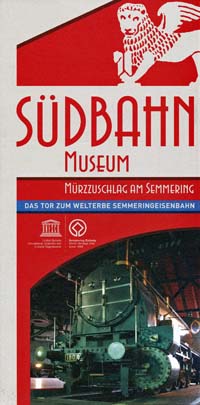
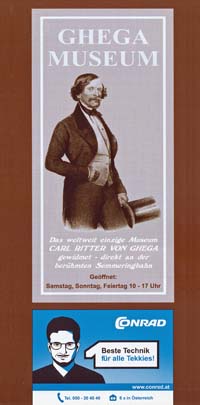
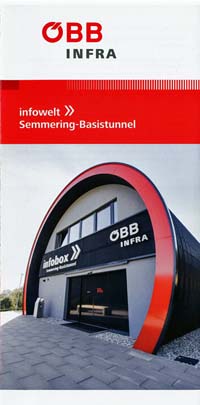
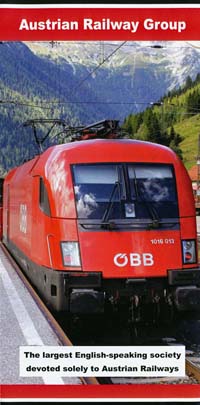
14 Jan 2014 - Construction Starts on Semmering Base Tunnel
29 Jun 2016 - LTE Receives Traxx Last Mile Locomotive
7 Oct 2016 - Austrian Railways Invests in Sleeper Trains
29 Dec 2016 - Austrian Federal Railways Orders 300 Trains from Bombardier
1 Feb 2017 - ÖBB Places Order for 200 Siemens Vectron Locomotives
15 Feb 2017 - ÖBB Seeks More Class 2016 Diesel Locomotives
9 May 2017 - Nude Women Moon Trains in Bizarre Protest Against New Tunnel
Österreichische Bundesbahnen (ÖBB)
Semmeringbahn Wanderweg Map
Semmeringbahn Fotos
Kalte Rinne Viadukt Video
Südbahn Museum
Train Simulator Add-On


